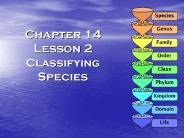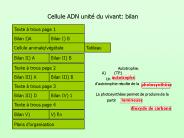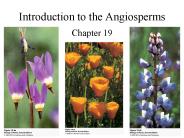Autotrophic PowerPoint PPT Presentations
All Time
Recommended
photosynthesis or autotrophic nutrition aerobic respiration cellular respiration lactic acid cellular respiration & photosynthesis cellular respiration ...
| PowerPoint PPT presentation | free to download
Title: WAS Orlando 1-24-01 AES Presentation Subject: Biofilter Kinetics Author: James M. Ebeling Keywords: Biofilter, Beadfilters, Kinetics Description
| PowerPoint PPT presentation | free to download
Autotrophic plants can convert CO2 into organic compounds (triose sugar phosphates) Biosynthesis occurs in chloroplasts (double-membrane; outer membrane permeable, ...
| PowerPoint PPT presentation | free to view
UMass Environmental Engineering Research Project Perchlorate Remediation Using a Novel Autotrophic Perchlorate Reducing Microbial Community Principal Investigators:
| PowerPoint PPT presentation | free to download
KINGDOM ARCHEABACTERIA Unicellular Prokaryotes Extremophiles (heat, salinity, acid, etc) Autotrophic/chemosynthetic and heterotrophic DNA structure similar to ...
| PowerPoint PPT presentation | free to view
Plants are autotrophic and can produce their food by photosynthesis. What is Photosynthesis, to know it, please study the s carefully.
| PowerPoint PPT presentation | free to download
Kingdoms protista, fungi, plantae, animalia Protista Unicellular Some autotrophic-algae Some heterotrophic Mostly found in aquatic habitats Endosymbionts live ...
| PowerPoint PPT presentation | free to view
Chapter 11 Protists Protist Charateristics Protists unicellular or multicellular eukaryotes that may be autotrophic or heterotrophic Autotrophs are organism ...
| PowerPoint PPT presentation | free to view
Classification of Kingdom Monera Based on Mode of Nutrition 1) ... Commensalism Autotrophic bacteria: ...
| PowerPoint PPT presentation | free to download
Bacteria: The Monera Kingdom Bacteria are classified into two groups: Eubacteria (true bacteria) and Archaebacteria (Ancient Bacteria). They are autotrophic or ...
| PowerPoint PPT presentation | free to view
KINGDOM PLANTAE CHAPTERS 27-31 CHARACTERISTICS Autotrophic, eukaryotic, multicellular, primarily diploid but some triploid (corn) Plant-like protists (algae) is the ...
| PowerPoint PPT presentation | free to view
Taxonomy and Classification The Six Kingdoms Archaebacteria Prokaryotic Unicellular Reproduces asexually Heterotrophic, but sometimes autotrophic Heterotrophic ...
| PowerPoint PPT presentation | free to download
Kingdom largest taxa, includes many types of organism with some similarities 2 ... Plantea: (Plants) a. Eukaryotic b. Multicellular c. Autotrophic ...
| PowerPoint PPT presentation | free to download
Plants and Inorganic Nutrients Animals Heterotrophic Plants - Autotrophic What is plant nutrition? Organic nutrition photosynthesis Inorganic nutrition ...
| PowerPoint PPT presentation | free to download
Protists Protist Characteristics Live in water Eukaryotic Most are unicellular, some are multicellular (algae) Protist Characteristics Some are autotrophic (can make ...
| PowerPoint PPT presentation | free to download
Energy and Life Autotrophs vs Heterotrophs ATP Photosynthesis Cellular Respiration Autotrophic Organisms Use light energy to make their own food Provide ULTIMATE ...
| PowerPoint PPT presentation | free to download
Kingdom Protista Chapter 20 Kingdom Protista Catch all Eukaryotes Unicellular and Multicellular Autotrophic or heterotrophic Some have cell walls Many have ...
| PowerPoint PPT presentation | free to view
Classy Kingdoms I am eukaryote I am autotrophic What am I? Fungi Animalia Eubacteria Archeabacteria Plantae Protista Fungi Animalia Eubacteria Archeabacteria Plantae ...
| PowerPoint PPT presentation | free to view
KINGDOM PLANTAE Plant Cells multi-cellular- plants contain many cells Plant Nucleus Eukaryotic- Plant cells contain a nucleus Plant food Autotrophic- Plants make ...
| PowerPoint PPT presentation | free to view
Plants! An introduction Plants All plants are multi-cellular,autotrophic eukaryotes. Lots of cells. Produces its own food using chlorophyll. Has a Nucleus .
| PowerPoint PPT presentation | free to download
EOC BY ESSENTIAL STANDARD. How did organisms like the euglena, which are heterotrophic and autotrophic change the classification system? Protists fall into 3 ...
| PowerPoint PPT presentation | free to view
Autotrophic picoplankton Mixed. Chlorophyll ns. Virginia Tributary Trends. Rapp. York James ... Autotrophic picoplankton mixed mixed mixed. Chlorophytes Inc. Inc. Inc. ...
| PowerPoint PPT presentation | free to download
Autotrophic bacteria. Autotrophic bacteria use carbon dioxide as their sole source of carbon. ... are autotrophic. The mathanogenic archaea are also autotrophic. ...
| PowerPoint PPT presentation | free to view
CLASSIFICATION OF ORGANISMS THE 6 ... are classified by how they get their food Autotrophic Heterotrophic Decomposers Kingdom Bacteria Some bacteria move ...
| PowerPoint PPT presentation | free to download
Protista- eukaryotic, unicellular, autotrophic or heterotrophic, 'fungus-like' ... Eukaryotic Kingdoms. Plantae- eukaryotic, multicellular, autotrophic ...
| PowerPoint PPT presentation | free to view
Unit 7 Obtaining food and breaking it down into a usable form for cells. NUTRITION A.) Introduction 1. There are two basic types of NUTRITION: AUTOTROPHIC NUTRITION ...
| PowerPoint PPT presentation | free to download
Autotrophic Nutrition and Heterotrophic Nutrition. Ingestion vs. Digestion vs. Egestion ... Autotrophic Nutrition MAKE THEIR OWN FOOD (EXAMPLE: PLANTS) ...
| PowerPoint PPT presentation | free to view
A zoophilic fungus causing equine ringworm and rare ... growth except those from Australia and New Zealand, which are autotrophic (var. autotrophicum) ...
| PowerPoint PPT presentation | free to view
Photosynthesis biology 1 Photosynthesis plays a key role in photo-autotrophic existence Photosynthesis is a redox process, occurring in chloroplasts, and involves two ...
| PowerPoint PPT presentation | free to download
Autotrophic or heterotrophic. Autotrophic (self-feeding) ... Multicellular autotrophic protists. Red algae. Brown algae (kelp) Green algae (seaweed) ...
| PowerPoint PPT presentation | free to view
Carbon Dioxide in the atmosphere has been steadily rising since regular ... Autotrophic. respiration. Carbon. allocation. Turnover. Heterotrophic. respiration ...
| PowerPoint PPT presentation | free to download
Cellule ADN unit du vivant: bilan Texte trous page 1 Autotrophie. A) (TP1 Bilan I)A Bilan I) B autotrophe Un d autotrophie r sulte de la photosynth se
| PowerPoint PPT presentation | free to download
Dinoflagellates Dinoflagellates Possess 2 flagella Cell wall composed of cellulose Autotrophic and heterotrophic abilities Some ability to migrate vertically in ...
| PowerPoint PPT presentation | free to view
Chemosynthetic autotrophic bacteria oxidize NH3 or NH4 - nitrification ... Nitrosomonas bacteria oxidizes ammonium to nitrite 2NH4 3O2 = 2NO2- 4H 2H2O ...
| PowerPoint PPT presentation | free to view
Let s recall some basic facts about plants: All plants are multicellular, eukaryotic, autotrophic organisms All plant cells contain cell walls composed of cellulose
| PowerPoint PPT presentation | free to view
Filters are an aquarium's life support system. Protists are unicellular, carry-on life processes, via diffusion require no filtration. Plants are autotrophic, produce O2 as a waste product. Hence, they require no filtration. Animals are heterotrophic, produce CO2, ammonia, and faces as waste products. These become toxic, in large amounts when dissolved in water. Hence, animals require a FILTER.
| PowerPoint PPT presentation | free to download
... 3.4 million per ml. Positive relationship found between trophic status and microbial biomass Autotrophic picoplankton (APP), heterotrophic nanoflagellate ...
| PowerPoint PPT presentation | free to download
Autotrophic and heterotrophic. Some move with flagella, pseudopods or cilia ... Euglena is both autotrophic. and heterotrophic. Ecological Importance of Protists ...
| PowerPoint PPT presentation | free to view
Some terms you may need today Heterotrophic- Needs to get nutrients and energy from outside source ie other organisms Autotrophic Self-Feeder can ...
| PowerPoint PPT presentation | free to view
Organization of an anoxygenic photosystem in the bacterial membrane ... Methanogens may be autotrophic or organotrophic. obligate anaerobic archaea. Fermentation ...
| PowerPoint PPT presentation | free to view
photosynthesis. Heterotrophic. Mixotrophic. Autotrophic. CO2 limiting in closed system: ... Photosynthesis. sucrose. light. gas exchange (CO2) chlorophyll. Root ...
| PowerPoint PPT presentation | free to view
iron (core), silicon (mantle), hydrogen (oceans), nitrogen, carbon, sulfur... NPP = GPP 'autotrophic' respiration by green plants = 60 PgC yr-1 ...
| PowerPoint PPT presentation | free to view
Autotrophic Bacteria. Chemosynthetic Bacteria. Cyanobacteria ... Can be autotrophic, heterotrophic, or mixotrophic. Some have a test known as a theca ...
| PowerPoint PPT presentation | free to view
I. Organism a whole living thing that carries out life functions. ... a. Autotrophic nutrition organisms (green plants) make their own food (photosynthesis) ...
| PowerPoint PPT presentation | free to view
Production an ecosystem (delineated) The terms: Primary production: autotrophic fixation of energy ... Castle Lake. Lake Tahoe. California ...
| PowerPoint PPT presentation | free to view
Taxonomy is the science of naming and classifying organisms. ... Plantae multicellular, autotrophic, cell walls contain cellulose. ...
| PowerPoint PPT presentation | free to view
Some heterotrophic protists obtain food by absorption ... Some (like Euglena) can alternate between autotrophism and heterotrophism ...
| PowerPoint PPT presentation | free to view
Land surface in climate models. Land surface parameterization schemes ... AR = Autotrophic Respiration. HR = Heterotrophic Respiration. C = Combustion. GPP. 120 ...
| PowerPoint PPT presentation | free to view
1. Sap flux scaled canopy transpiration, stomatal conductance and water use ... a: autotrophic, h: heterotrophic, w: wood, f: foliage, r: root, s: soil ...
| PowerPoint PPT presentation | free to download
Autotrophic. Make nutrients. Fungi Kingdom. Multicellular and ... Heterotrophic and autotrophic. Make, absorb and ingest food. Archaebacteria and Bacteria ...
| PowerPoint PPT presentation | free to view
A MIDDLE CAMBRIAN PROTO-CORAL WITH AN ACALCAREOUS, AGGLUTINATED SKELETON ... Anemone-Like Suspension-Feeder. Possibly commensal photo-autotrophic. KEL 8/27/09 ...
| PowerPoint PPT presentation | free to download
Chapter 8 Photosynthesis. Autotrophic ... This reaction is also called photolysis (????) Dark Reactions. Where? In chloroplasts of green plants. Reaction: ...
| PowerPoint PPT presentation | free to view
Photosynthesis is the process by which autotrophic organisms use ... Photolysis- breaking water. ATP and NADPH made. ATP Formation ... from photolysis of water ...
| PowerPoint PPT presentation | free to view
Introduction to the Angiosperms Chapter 19 Angiosperms- Anthophyta Autotrophic, but parasitic and saprophytic representatives. Enclosure of ovules within carpels.
| PowerPoint PPT presentation | free to download
The kingdom Archaebacteria is relatively small, consisting of three main phylogenetic groups. ... Some are autotrophic - able to produce their own food. ...
| PowerPoint PPT presentation | free to view
... become heterotrophic when kept in the dark, and they resume their autotrophic ... as indicators in the classification and dating of sedimentary rocks. ...
| PowerPoint PPT presentation | free to view
























































